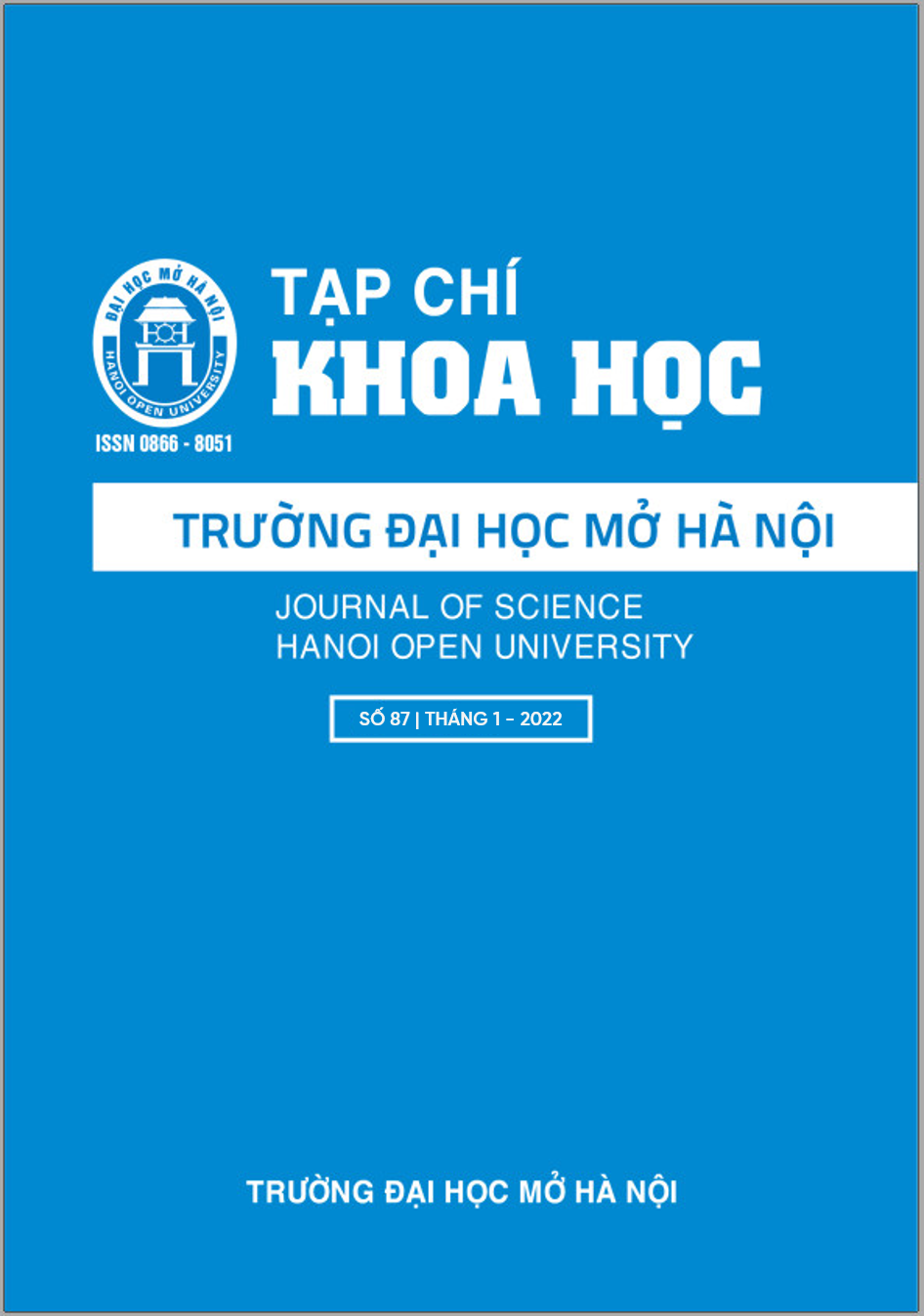COMMON ERRORS MADE BY THE THIRD-YEAR MAJOR STUDENTS AT HANOI OPEN UNIVERSITY WHEN WRITING ENGLISH ACADEMIC ESSARY
Từ khóa:
errors, third-year students, types, implications, English academic essay writingTóm tắt
The goal of this study is to identify and categorize common errors in academic essays for third-year English major students at Hanoi Open University when writing two categories of academic essays: cause-effect and argument. Therefore, the aim has been to identify those difficulties from an error analysis standpoint and identify the sources underlying them. An analysis of a written corpus of fifty students’ written essays was thoroughly conducted. Types of errors were categorized, and the factors that contributed to them were analyzed. The findings showed that the most frequent types of errors made by the participants were: 1) Adverb clauses, (2) Sentence structure, (3) - Word choice , (4) Relative clauses, (5) Verb form, (6) Singular/plural noun, (7) Parallel structure, (8) Article,
- Preposition, (10) Pronoun, (11) Style, (12) Subject-verb harmony, (13) Conjunction, (14) Comparative structure. On that approach, the findings propose implications for students to minimize their writing errors and improve their English academic essay writing
Tài liệu tham khảo
[1]. Beasson, L. (1993). Feedback and Revision in Writing Across the Curriculum Classes. Research in the Teaching of Englsh, 27,395-421.
[2]. Bennui, P. (2008), A study of L1 interference in the writing of Thai EFL students, Malaysian Journal of ELT Research, 4.
[3]. Bhela, B. (1999), Native language interference in learning a second language: Exploratory case studies of native language inference with target language usage, International Education Journal, 1(1).
[4]. Brown, H. D. (1994). Principles of Language Learning and Teaching (3rd ed.), Prentice Hall. Journal of Maltese Education Research, 2(1).
[5]. Brown, H.D. (2007). Teaching by Principles: An Interactive Approach to Language Pedagogy (3rded.). Eaglewood Cliffs, NJ: Prentice Hall Regents.
[6]. Cambell, C. (1999). Teaching Second Language Writing: Interacting with Text. Boston: Heinle & Heinle.
[7]. Chan, A. Y. W. (2004). Syntactic transfer: Evidence from the interlanguage of Hong Kong Chinese ESL learners, The Modern Language Journal, 88(1).
[8]. Dai, W. Y., & Shu, D. F. (1994). Some research issues in contrastive analysis, error analysis and interlanguage, Journal of Foreign Languages, 5.
[9]. Garjaka, K. (2010). Teaching with Students: Effective Instruction in Culturally and Linguistically Diverse Classrooms, Multilevel and Diverse Classrooms, TESOL Classroom Practice Series. Virginia: Lecturers of English to Speakers of Other Languages, Inc.
[10]. Jayakaran Mukundan et al., 2006. Peer Conferencing and Teacher-Student conferencing as Alternartive or Combination Revision Strategies. Journal of Language Studies, Vol.2, June 2006.
[11]. Kroll, B. (1991). Teaching Writing in the ESL Context.Teaching English as a Second or Foreign Language. Boston: Heinle & Heinle Publishers, Massachusetts
[12]. Mitchell, R., & Myles, F. (2004). Second Language Learning Theories (2nd ed.). London: Edward Arnold. Norwegian learners of English, System, 27, http://dx.doi.org.
[13]. Nunan D. (2000). Language Teaching Methodology. International Book Distributors Ltd.
[14]. Olsen, S. (1999). Errors and compensatory strategies: a study of grammar and vocabulary in texts written by Norwegian learners of English, System,27, http://dx.doi.org.
[15]. Reid, J.M. (1982). The Process of Composition. London: PrenticeHall International Inc.
[16]. Reid, J.M. (1993). Teaching ESL Writing. New Jersey: Prentice Hall Regents Prentice- Hall, Inc.
[17]. Weigle, S. C. (2002). Assessing Writing. Cambridge: Cambridge University Press, http://dx.doi.org.
